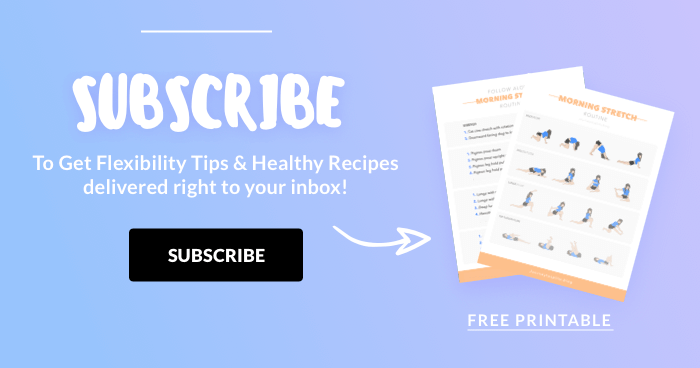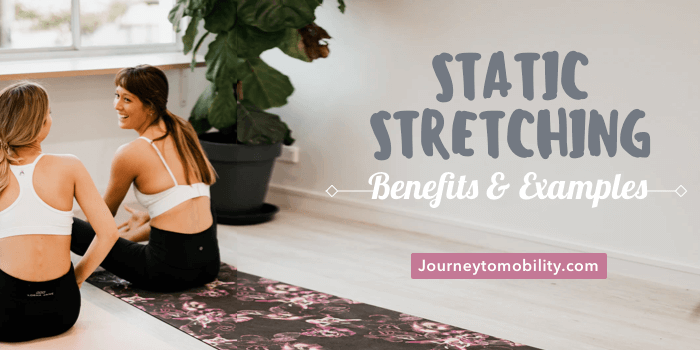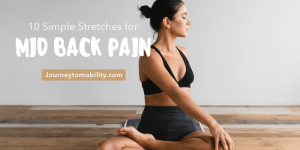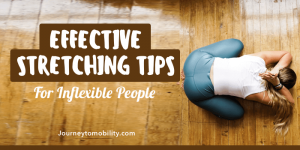For many years, I would workout without stretching. I only realized why stretching was important when my body started getting more and more stiff over time. In order to stretch more, I did research on some static stretching benefits and examples that I could use to make my workouts better.
Stretching can make a difference in how well your muscles recover after you exercise. It enhances your range of motion during athletic performance, improves flexibility and minimizes the risk of injury. Here are the benefits of static stretching, when you should be doing them and examples of static stretches that you can add to your next workout.
Overview
- Static Stretching vs. Dynamic Stretching
- Benefits of Static Stretching
- Safety Tips for Stretching
- Static Stretching Examples
Static Stretching vs. Dynamic Stretching
The two most common types of stretches are dynamic and static stretching.
Dynamic stretches are movements that you do with control to prepare your muscles and ligaments for the exercises that you will be doing next (1). These stretches should be used as part of your warm up routine before doing your regular workout. A complete warm up should include 5-10 minutes of low-to-moderate intensity cardio followed by a few dynamic stretches.
Static stretches are stretches that you hold in place for a period of time. Typically, static stretches are held for 30-45 seconds. These stretches should be done 5-10 minutes after your workout during your cool down to allow your body to gradually return to its normal state. Holding your stretches helps your muscles recover faster and will help improve your range of motion over time.
Benefits of Static Stretching
There are a lot of benefits that come out of static stretching. Some of these benefits include:
- Improved Flexibility and Range of Motion
- Decreased Risk of Injury
- Increased Blood Flow
- Improve Recovery Time
- Improves Coordination, Balance and Postural Awareness
Safety Tips for Stretching
According to the Department of Health & Human Services, stretching should be “part of your warm-up and cool-down activities. It will help put you in the right frame of mind before exercise and help you relax afterwards.” Here are a few tips on how to safely add stretching into your workout routine.
- Always warm up before you stretch. When your muscles are cold, moving too quickly increases your risk of injury.
- Form before depth. Always check if your hips are square, your joints aligned one on top of the other rather than forcing yourself deeper into a stretch. Depth will naturally come quicker by stretching with proper technique.
- Move smoothly when transitioning from one stretch to another. Each stretch should be slow and controlled. Do not bounce when holding a stretch. Bouncing damages your muscle fibres by creating micro-tears.
- Only hold stretches to the point of mild discomfort. This point should be slightly below your pain threshold. The discomfort should subside as you breathe and hold the stretch. Once you have found your threshold, you should be able to stretch a little deeper each time without it hurting.
- Work opposing muscle groups when you stretch. Your muscles work together to allow your body to move. This applies to stretching as well. To improve your range of motion, you should stretch both the front part and back of large muscle groups such as your thighs.
- Remember to breathe. If you hold your breath while stretching, your body responds by tightening up your muscles which would make the stretch more difficult. Focusing on your breath will allow your body to naturally relax and sink deeper into the stretched position.
- Stretch for at least 10 minutes everyday to see improvements in your overall balance, strength and flexibility.
10 Static Stretching Examples to Add to Your Next Workout
These 10 static stretches target each of the major muscle groups. Hold each stretch for 20-30 seconds. Be mindful of your body and where you feel the stretch. Practice getting a little deeper into your stretches each day.
Basic Quadricep Stretch
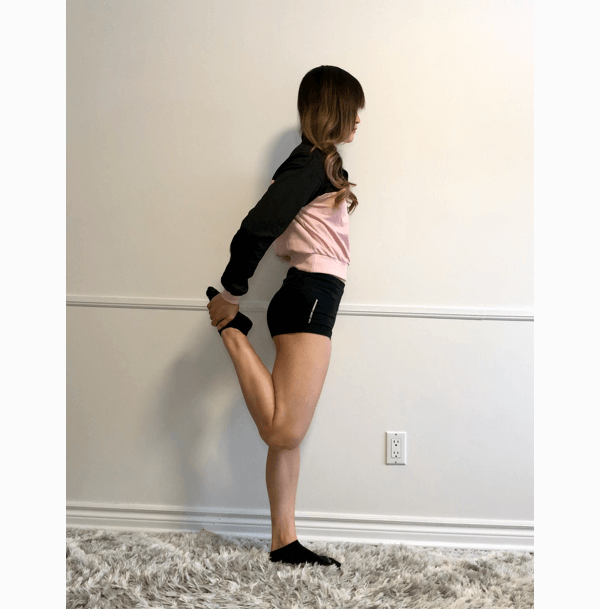
- While standing, reach behind to grab your right ankle.
- Pull your ankle towards your glutes. Keep your core engaged and press your right hip forward.
- Breathe and hold for 20 seconds. Repeat on the other side.
Hamstring Stretch
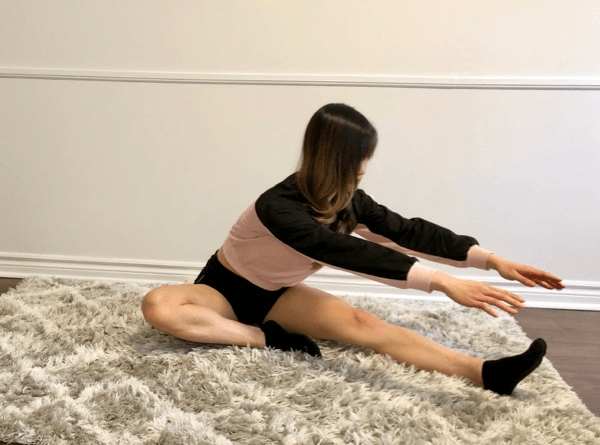
- Start in a seated position. Straighten your right leg while your left leg is bent.
- Reach towards your toes while keeping your back flat. I practice by reaching above my toes to maintain a flat back. Reaching for a yoga block would also help correct your form.
- Breathe and hold for 20 seconds. Repeat on the other side.
Glute Stretch
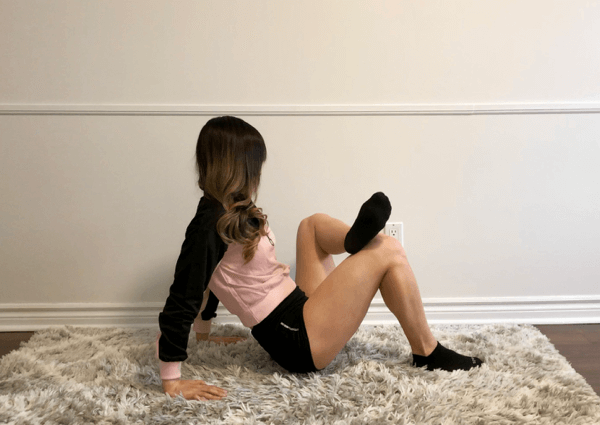
- Start in a seated position, both knees up towards the ceiling. Place your hands behind you as support.
- Place your right ankle under your left knee.
- Engage your muscles and actively press your right knee away from you. You should feel this stretch in your outer right glute.
- Breathe and hold for 20 seconds. Repeat on the other side.
Kneeling Hip Flexor
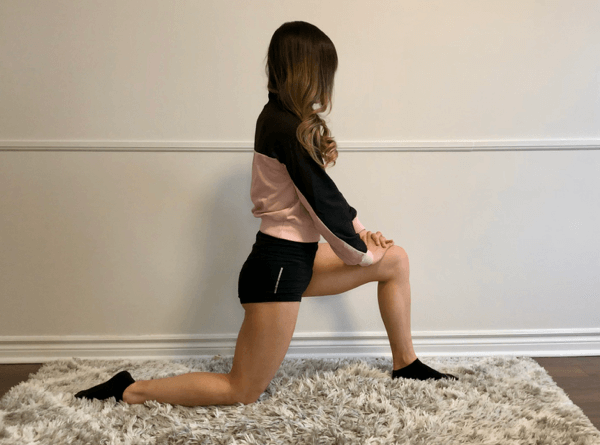
- Start in a low lunge position with both knees bent at a 90-degree angle. Your front knee should be directly above your ankle. Your back knee should line up with your hips.
- Actively press forward with your left hip while keeping your core engaged.
- Breathe and hold for 20 seconds. Repeat on the other side.
Cobra Stretch
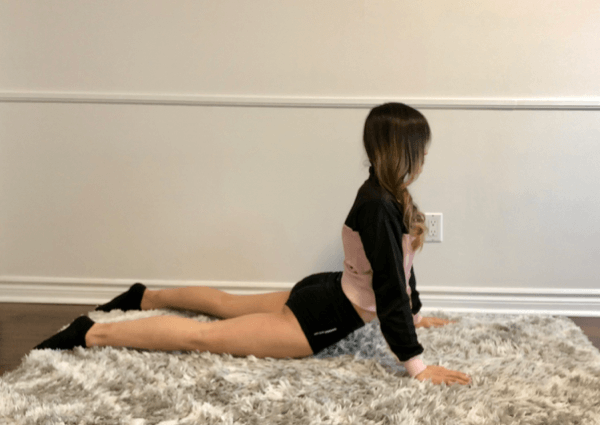
- Lay down with your stomach on the mat.
- Place both hands on the ground under your shoulders.
- Gently press against the ground to lift up your chest. You should feel a stretch in your abs. Lift halfway or all the way up if you want to feel the stretch more in your lower back.
- Breathe and hold for 20 seconds.
Chest Stretch
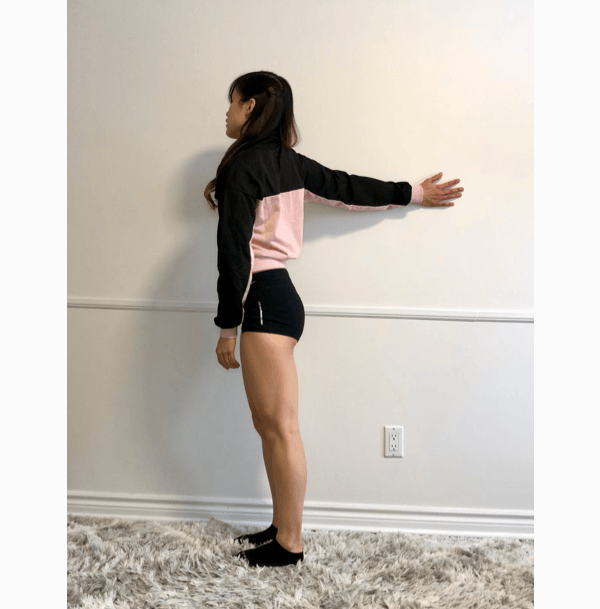
- Stand next to a wall.
- Put one arm back, resting it flat against the wall.
- Gently press against the wall with your hand as you twist your upper body away from the wall. You should feel the stretch in your chest and upper shoulder.
- Breathe and hold for 20 seconds. Repeat on the other side.
Calf Stretch
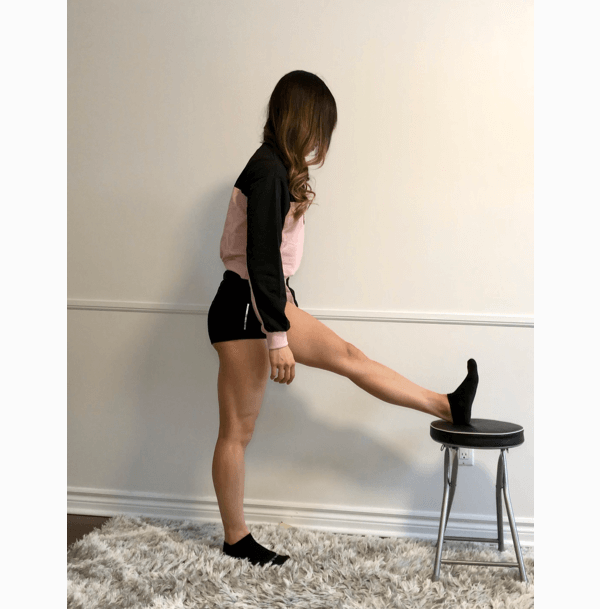
- Prop your right leg straight on a chair or bench. The surface should be below hip-level.
- Actively flex your foot towards your body. Flex your foot more to feel a stretch in the calves.
- Breathe and hold for 20 seconds. Repeat on the other side.
Side Tricep Stretch

- Reach over your head to grab your left elbow with your right hand.
- Lean your body to the right for a side stretch. You should feel the stretch down the left side of your body from your tricep down to your torso.
- Breathe and hold for 20 seconds. Repeat on the other side.
Wrist Stretch
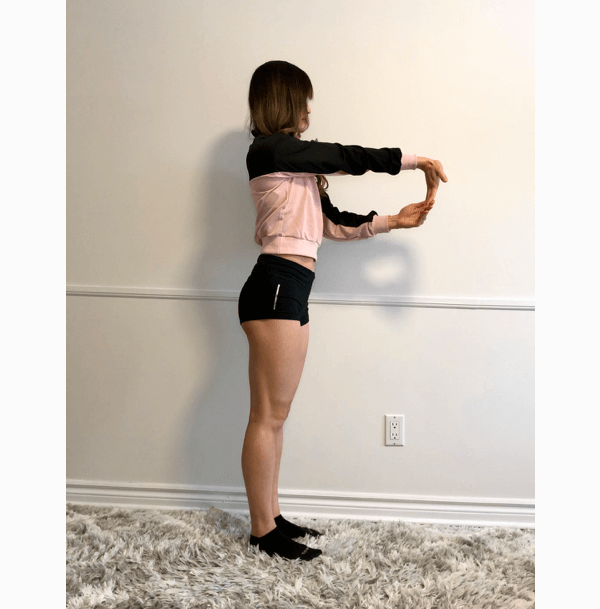
- Lift your right hand up so that your palm is facing the ceiling.
- Use your left hand to pull your right fingertips down. This is a good stretch for your wrists after doing push-ups or typing at a computer.
- Breathe and hold for 20 seconds. Repeat on the other side.
Seated Back Twist
- Start in a seated position with both legs straight out in front of you.
- Place your right foot on the outside of your left knee.
- Twist to the right side, looking over the shoulder.
- Breathe and hold for 20 seconds. Repeat on the other side.
Takeaway
Incorporating static stretching during your cool down will help improve your range of motion and help your muscles recover faster after a workout. Over time your muscles will learn what it feels like to relax and doing stretches will get easier.
